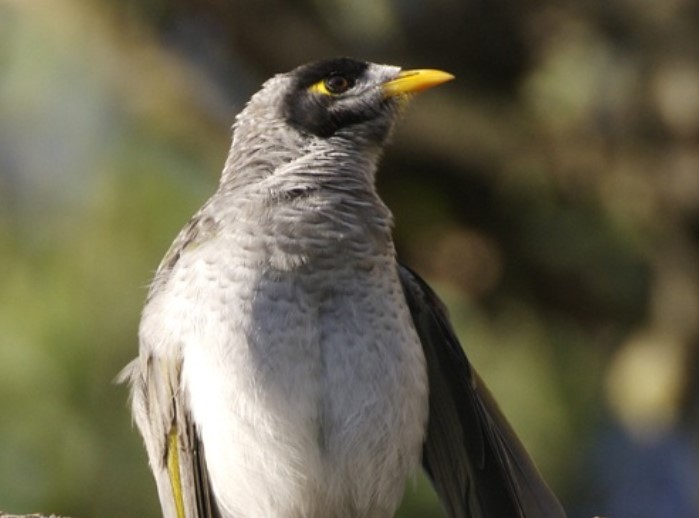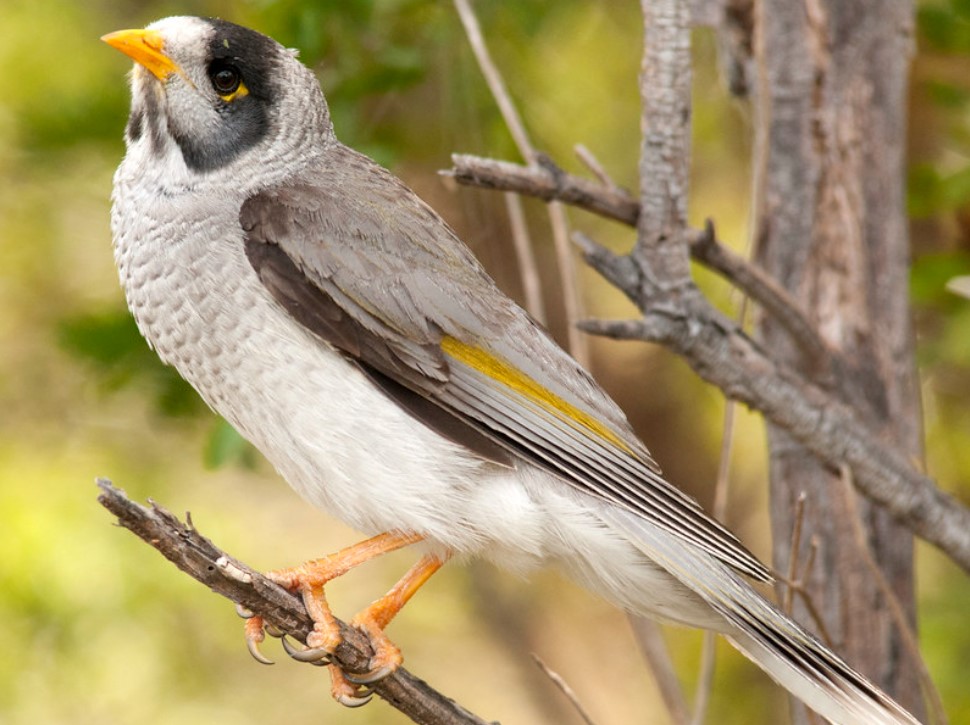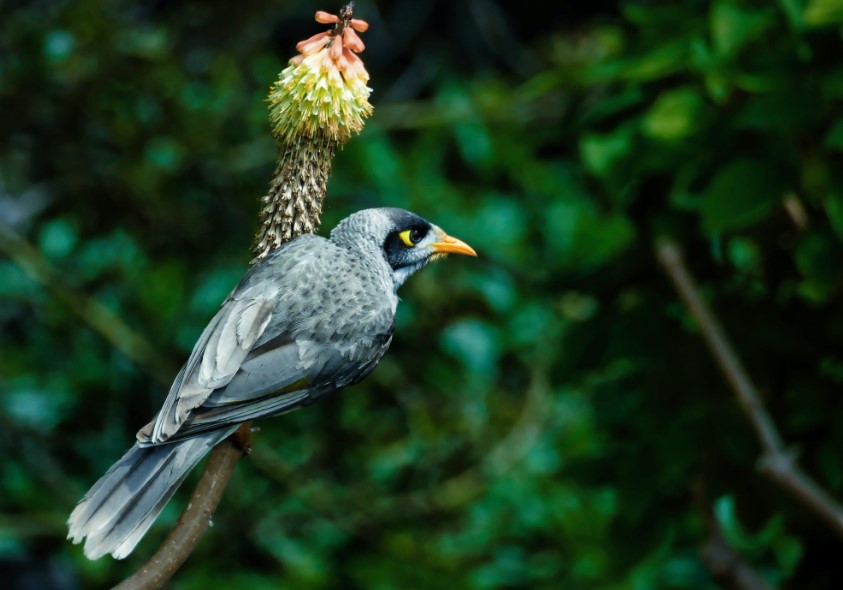Habitat: The Noisy Miner (Manorina melanocephala) is garrulous on sedentary commutes and perhaps the best-known honeyeater in eastern Australia. This beautiful bird is replacing the Yellow-throated Miner there in better-watered woodlands on both sides of the Great Dividing Range. Following the river gum woodlands of the Murray River, it reached the Mt Lofty Ranges and suburbs of Adelaide around the turn of the century, where, as elsewhere, it now enters urban gardens with large eucalypts.

Social organization in the communes is complex, with several territorial groups of 6 to 30 birds combined in a loose colony of up to several hundred. Males outnumber females. Noisy Miners unite with mob predators and are particularly noisy when ganging up on snakes or goannas. Also, they attack other species of birds that enter their territory and drive them out, sometimes even killing some of them. In these attacks, miners use the same threatening behavior and displays as they do with members of their species.
The patch of bare yellow skin behind the eye comes into play here. By fluffing the feathers over their edges or by sleeking them back, the miner can change the effective size of the patch. In a frontal stare, the yellow patches look like two large, intimidating eyes. Noisy miners have other boisterous social displays, or ‘corroborees’. Many birds come together and greet each other by opening their beaks and lifting their tongues while slowly waving their wings. Such social greetings occur mainly among birds of the same territorial group.
Noisy miners indulge in many other types of communal activity, such as feeding, bathing, and sleeping together. A communal song is uttered for about 15 minutes before sunrise between May and January, its pure whistling contrasting with the harsh squeaks and chatters given in daily socializing. The female builds the nest alone, finishing it in about six days and often dismantling an old nest to do so. The female displays a stereotyped display of flight as she flutters along, holding her head high and back as she transports material to the nest. Males may accompany her and pick up twigs, but she always drops them in foliage or forks short of the nest.
Identification: Both sexes are similar, as the male is larger. The crown is black, extending down over the ears to the sides of the throat and chin. Hindneck to rump mid-grey, mottled dusky, and flecked white on the nape. Wings are mid-gray-edged citrine. The tail is dark gray and broad-tipped white. Forehead white-grey, lores whitish; a patch of bare yellow skin behind the eye. Underparts are white, mottled gray on the throat and breast. Eye brown. Bill yellow. Feet brown- to orange-yellow. The immature bird (as an adult) is a suffusion of light brown on the back, rump, and wing coverts.
Vocalization: The noisy miner sound is a complex repertoire call. A territorial call is a rhythmic, repeated two- or three-syllable teu-teu-teu-teu uttered in short, undulating flight. Females may utter four or five throaty, chuckling notes in sequence, with the pitch of the last rising questioningly, often in answer to the territorial call of the male. Nasal whistled chatter to ground predators; pure whistle to flying predators. Soft twitters and whistled squeaking in social and feeding groups The Noisy Miner sings before sunrise at the onset of or during nesting; pure whistles and antiphonal notes are emitted in chorus.

Diet: Noisy miners feed mainly on insects and other invertebrates, gleaning, hopping, and fluttering about the mid-strata of woodland, poking along branches and prising under bark for prey, and even dropping to work over litter on the ground. Also, they take fruit from orchards, occasionally becoming pests during droughts, and will gather nectar from blossoms and other sugary products from foliage such as lerps, manna, and honeydew. In some places, they have learned to invade houses and picnic grounds for jam, butter, and bread.
Nesting and Breeding: Nesting and breeding occur mainly in June and December and can occur in all months. The nest is a cup-shaped, often flimsy The nest is made of twigs, grasses, and leaves. The nest is bound by cobwebs and cocoons sometimes lined with hair; line a felt-like pad of silk from moths’ cocoons or wool in the bottom. It supports upright outer branches up to 20 meters, sometimes as low as 0.5 meters.
Eggs: The bird lays 2 to 4 eggs, rarely five; cream-white, spotted heavily with red-brown, mostly at the larger end; oval, 27 x 18 mm. The incubation period is about 15–16 days for females. Young fledge in about 15–16 days. Eggs are laid at daily intervals from 2 to 10 days after the nest is finished; incubation begins with the laying of the second. Up to 8 or more males may visit a nest while the female is incubating and join in feeding the nestlings; in any one season, one female may be helped by as many as 24 males, and feeding visits to the nests often exceed 50 an hour. After fledging, the young remain together, huddled in the foliage, and continue to be fed for another five weeks. Several broods may be reared in a season.
Distribution: Noisy Miner makes sedentary colonies in eucalypt woodland and open forest with clear understory throughout the eastern mainland, north to Atherton Tablelands, Queensland, south to Tasmania, and southwest to Mount Lofty Ranges, South Australia.
Races: There are two races: one on the mainland and the other in Tasmania.
Alternative Names: The bird is also known as Micky, Noisy Mynah, Squeaker, and Soldier-bird.
Size: The Noisy Miner measures about 250–290 mm in length.
